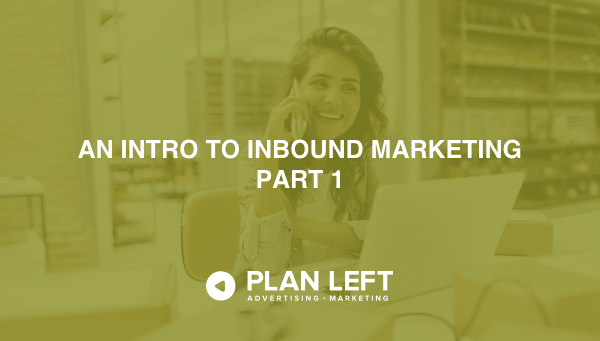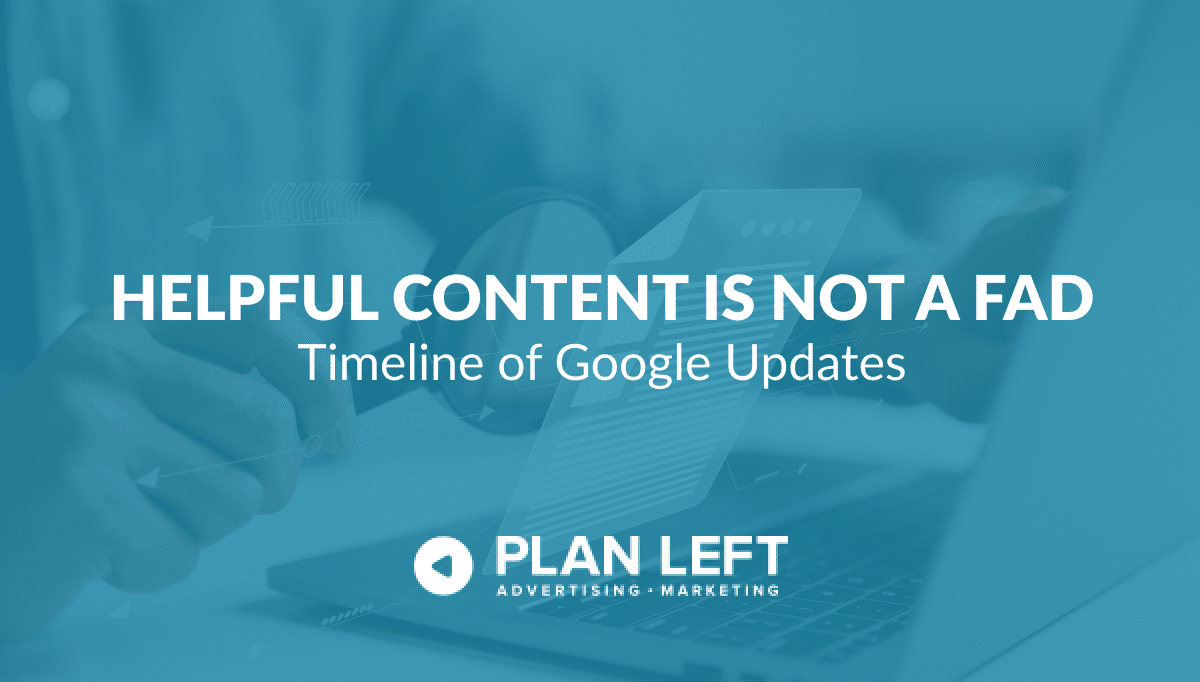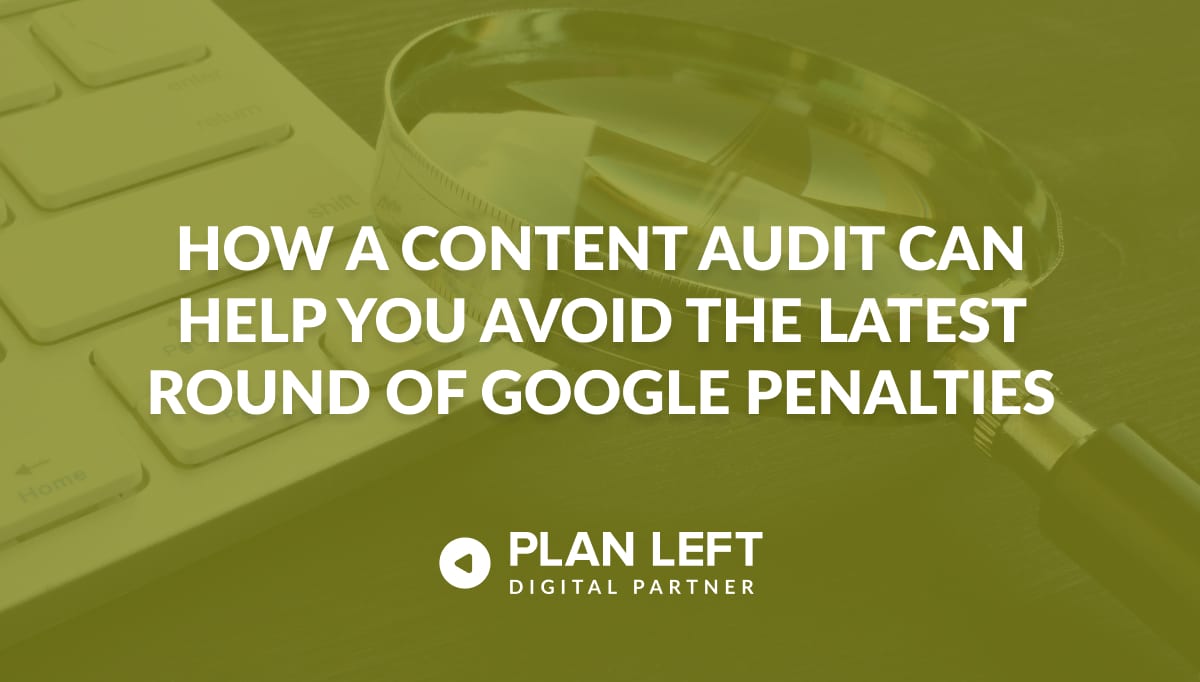
Updated Content on 6/23/2023
If you’ve followed our blog for a while or given us the great honor of being one of our clients, you’ve probably seen the term “inbound marketing.” While the phrase came from the executives of HubSpot, the practice is accessible to anyone. And the process really does work. Over 74% of organizations rely on an inbound approach to marketing. That’s why we offer it here at Plan Left.
Even after hearing how we plan to use inbound marketing to get results for your company, you may need clarification. The requests we make to get the job done can be complex. That’s okay. We want you to know what we know so you don’t have to wonder what’s going on in the background. This introduction to inbound marketing is for you.
The Components of Inbound Marketing
The very idea behind inbound marketing is that customers find you exactly when they need you. In the past, marketing departments put all the information out there through disruptive channels like the newspaper, radio, and television. Then sales teams follow up with people who may benefit from your company’s products or services.
Now, these channels are still valuable for first-touch marketing—getting the word out that your company exists and that the products or services you offer are available. What these outlets don’t offer is the chance to nurture a relationship with potential customers and clients. Where can they get information when they want to know more about your company? The components of inbound marketing aim to get that information into the hands of prospective consumers with the goal of conversion. Content, promotion, personalization, social media, and full integration of these components lead to a powerful marketing machine.
Customers in this age are researchers. The internet and social media availability allows them to search for the products and services they want on their own time rather than be told by billboards or television commercials. Using all of the inbound marketing strategies listed above, companies can make it easy for customers to learn more about them. If your inbound marketing strategy is successful, you’ll convince customers that your product is what they were looking for all along.
So how exactly does this work?
The Big Steps of Inbound Marketing
There are four main steps to inbound marketing, starting with attraction. You want to bring the right people to your website to read your content, though. A hundred of the wrong type is less valuable than one of the right type.
The next step is conversion. When the right consumer type comes along, appreciates the content they find, and wants to consider making a purchase, they move from the “visitor” column to the “lead” designation.
After becoming a leader, a prospect’s next step is to close, meaning they make a purchase. From here, they move from lead to customer. And your work is not done at this point, especially if you want that customer to keep coming back.
The last step is customer delight. Too many companies skate by on doing the bare minimum, and too many customers have become so accustomed to the bare minimum that they think a whole lot of “nothing special” is something to cheer about. You’re not going to be like that, are you?
Popular Inbound Marketing Strategies
Let’s take a look at the three main strategies for inbound marketing. One strategy is what you’re reading right now: a blog. Blogs are a great way to attract customers by answering common questions they have surrounding your product and its uses. For example, if your business sells coffee, you can publish blog posts about iced latte recipes or how to use a French press. Remember, customers aren’t really looking for a product; they’re looking for a solution. When you provide free, valuable content like blog posts, customers are more likely to trust your brand and look to you for solid solutions.
You can ensure that this content gets in front of your customers’ eyes by using SEO strategies. Including relevant keywords, posting consistently, and creating quality content will raise your search engine rankings and increase the chances that your posts will come up first when customers search for answers.
Social media is another powerful inbound marketing tool. To attract new customers, you can advertise your blog posts, informational videos, and other interesting content on social media platforms. Video is especially good at capturing attention by being entertaining and educational. Think of YouTube, TikTok, and Instagram Reels videos as a more dynamic kind of blog. They’re short, sweet, and offer relevant contact to get customers hooked and wanting more. Your social media posts and videos will show up in customers’ feeds because they’re interested in the kinds of things that you do. That’s what makes inbound marketing so different from outbound marketing: the customers are coming to you, and you just have to show them you’re exactly what they need.
Other forms of inbound marketing include e-books, white papers, infographics, webinars, and research that your company conducts. Even elements of your website, such as chatbots and contact forms, can be considered inbound marketing. It’s all about making it easy for customers to find solutions to their problems, and optimizing your user interface will help guide them to purchase.
Finally, don’t forget to measure and analyze the performance of your inbound marketing strategies. It’s important to know which parts of your content are solving your customers’ problems and which aren’t. Blog posts with high click counts and read times reveal what kind of content people are interested in. Depending on your analytics, you can reshape your strategy every quarter to make sure you’re posting the best content possible to bring customers to your company.
Now you know what makes up inbound marketing. Next, we’ll talk more in-depth about how these components come together to work for you. If you’re already hooked and can’t wait until next week, give us a call right now!
Explore Latest Posts
Google says the quality of your webpage is a ranking factor, but what is ‘quality’ according to Google? That would ... read more
April 19, 2024
In 2011, Google first changed how content was written with the Panda Update by changing how keywords could be used ... read more
April 17, 2024
The latest Google algorithm changes have shaken the search marketing world. While the Google Spam update has finished, the Google ... read more
April 16, 2024
MARKETING insights
Join the Thousands Who Receive Our Twice-Monthly Newsletter.
It's hard to keep up. Our newsletter is packed with buyer behavior insights, the latest marketing and technology updates, work/life balance tips, and—because we ❤️ our support staff—adorable pets looking for forever homes. Only twice per month. No clogged inboxes. You can't say no.




